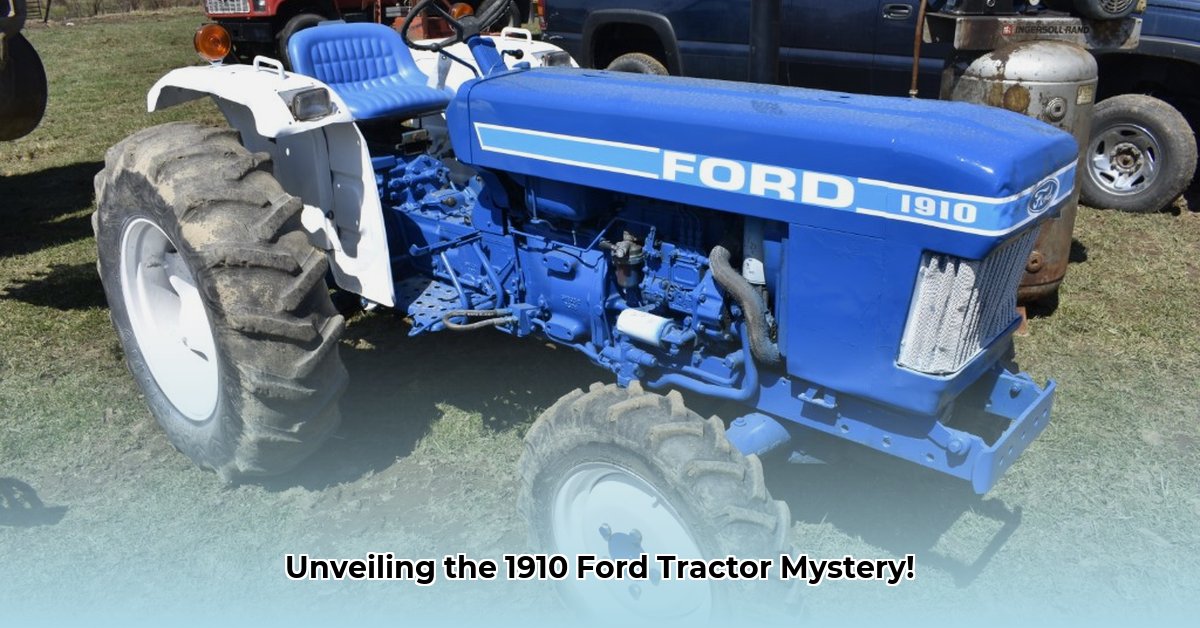
A Historical Overview
The 1910 Ford tractor, manufactured between 1983 and 1986 by Shibaura and marketed under the Ford name, represents a fascinating chapter in agricultural mechanization. While significantly less sophisticated than modern tractors, its 32 horsepower engine and 1729 kg lift capacity offered substantial capabilities for its time. The 12-speed transmission, though lacking the smoothness of modern automatics, provided versatility for various tasks. However, its absence of modern features—power steering, electronic controls, sophisticated hydraulic systems—immediately distinguishes it from contemporary agricultural machinery. For more on Ford tractors, see this helpful resource: Ford Tractor Info. This review will delve into its suitability for modern applications, weighing its historical significance against the challenges of integrating it into today's farming landscape.
Operational Efficiency and Sustainability
Direct comparisons of fuel efficiency between the 1910 Ford and modern tractors are difficult due to a lack of standardized testing data for vintage machines. However, it's reasonable to assume significantly lower fuel efficiency relative to modern, fuel-injected engines. The environmental impact is also challenging to quantify precisely given the absence of historical emission data. While the simpler design might potentially offer easier recycling at its end-of-life, its higher fuel consumption and lack of emission controls contribute to its lower sustainability compared to modern counterparts. This raises the crucial question: Can a vintage tractor like this compete with modern sustainable farming practices?
Maintenance and Repair: A Significant Hurdle
A major drawback for potential users is the difficulty in sourcing parts for the 1910 Ford tractor. This scarcity necessitates specialized mechanical expertise, directly increasing repair costs and downtime. "Imagine the frustration of a vital part breaking down and having to spend weeks, if not months, searching for a replacement!" reflects the reality faced by potential owners. Such logistical challenges diminish its viability for modern, time-sensitive agricultural operations.
Safety Concerns: A Critical Assessment
The 1910 Ford lacks the modern safety features ubiquitous in today's tractors. The absence of rollover protection structures (ROPS), seatbelts, and other crucial safety measures significantly increases operator risk. This inherent safety deficit raises serious concerns about its suitability for everyday use in a modern agricultural context. Is the historical value worth the unacceptable safety risk?
Regulatory Compliance: Navigating Legal Hurdles
Compliance with current safety and emission regulations presents a huge obstacle. It's highly unlikely the 1910 Ford would meet modern standards without substantial modifications, possibly rendering its use illegal or severely restricted depending on local jurisdictions. Before considering operation, thorough investigation of local agricultural and environmental regulations is essential.
Comparative Analysis: Pros and Cons
| Feature Category | Advantages | Disadvantages |
|---|---|---|
| Power & Capabilities | 32 hp engine; 1729 kg lift capacity; 12-speed transmission | Low efficiency; lacks modern features; limited technological advancements |
| Maintenance & Repair | Relatively simple mechanical design (for its era) | Significant parts sourcing challenges; high repair costs; specialized expertise |
| Sustainability | Potentially simpler recycling (compared to modern) | High fuel consumption; lack of emission data; questionable long-term viability |
| Safety | None readily apparent | Absence of modern safety features; heightened operational risk |
| Cost | Potentially lower initial purchase price (used market) | Expensive ongoing maintenance & repair; questionable long-term reliability |
Conclusion: A Collector's Item, Not a Modern Workhorse
The 1910 Ford tractor undoubtedly holds historical significance, offering a fascinating glimpse into the evolution of agricultural machinery. However, its practical application in modern farming is severely limited due to significant challenges in maintenance, safety, regulatory compliance, and sustainability. It is better suited for restoration projects, museum displays, or very niche applications, rather than everyday agricultural tasks. Its value lies primarily in its historical and nostalgic appeal, not its practical functionality for contemporary farmers.